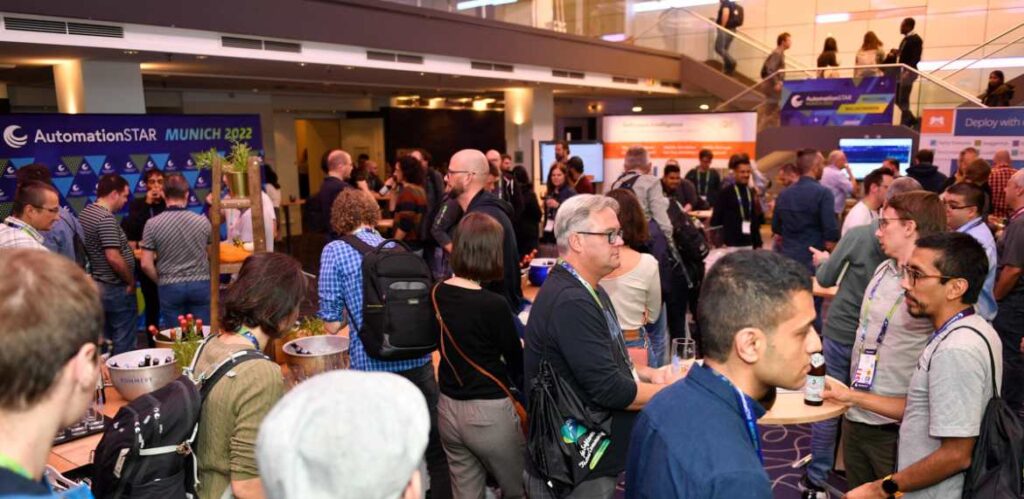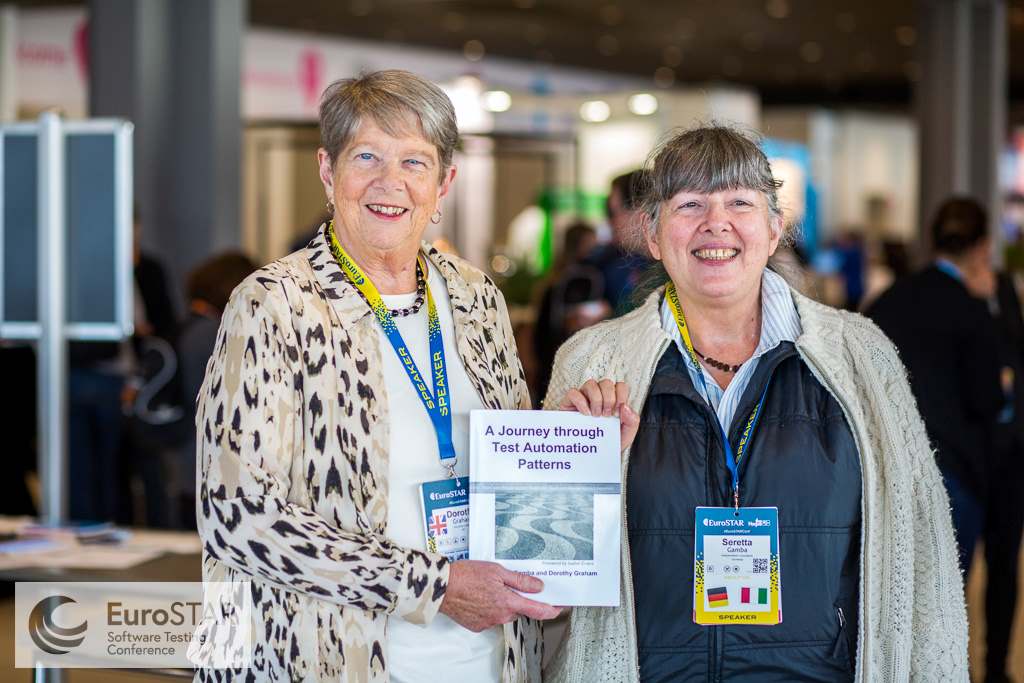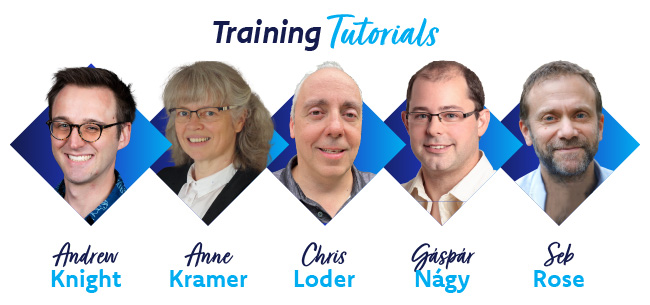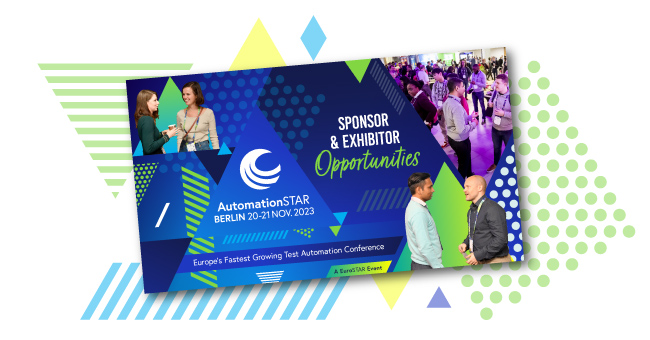This selection of recommended talks has been compiled by Chris Loder, Programme Chair of the 2023 AutomationSTAR Conference in Berlin, 20-21 November.
Hi everyone, I have been asked by some of the more advanced automation developers as to what tracks and tutorials I’d recommend for them at AutomationSTAR 2023. While I hate to choose one talk over another talk, as I feel there is always something to be learned from even the most intro of talks, and as a more advanced automation developer myself, I decided to take the “What would Chris attend if given the chance?” approach. So, here is what I came up with. And please note, that this is not meant to take away from any talks that are not mentioned as they are ALL AWESOME!!!
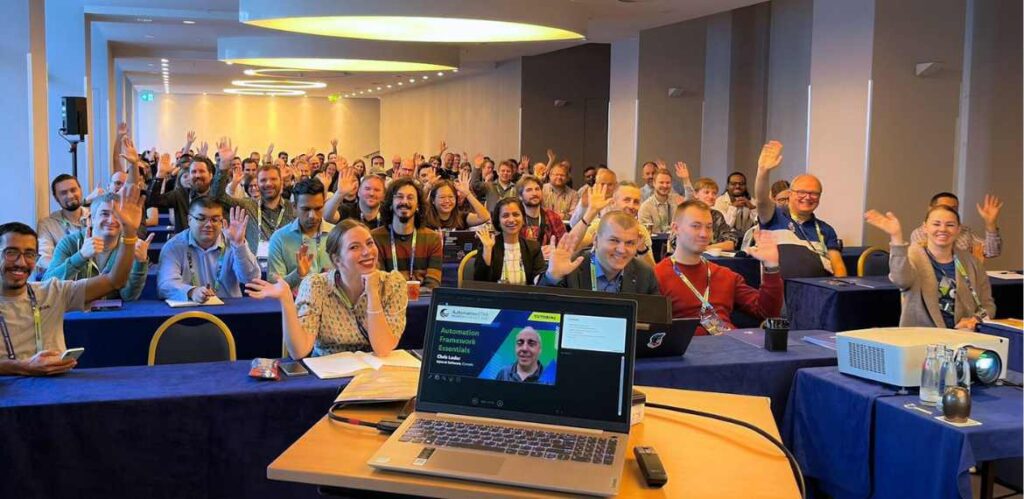
Chris’ Hypothetical Agenda for AutomationSTAR 2023
Day 1 – Monday 20th November
- Tutorial: Since I can’t really take my own talk (but I would if I could since it is for more advanced developers, especially those who are building their own frameworks) and since I am entrenched in my own custom-built framework and toolset, I would most likely attend Exploring BDD Automation Patterns with Gáspár Nagy and Seb Rose.
- Keynote: Of course, the Keynotes are always great, and I can’t wait to introduce Janna Loeffler to you all as our first keynote speaker. She’ll be showing us how Streamline our CI/CD Pipeline with Test Automation.
- Lunch: A great chance to get fueled up for the awesome afternoon ahead as well as meet some new folks while enjoying an amazing lunch.
- First track session: While I am inclined to attend Programme Team member Sophie Küster’s talk about Tooting your Own Horn as I know it will be great (and don’t we all experience a little impostor syndrome from time to time?) I would most likely end up in the Automated Lighthouse Reporting with WebDriverIO as that is something that is new to me and since my UI framework is built on Webdriver, learning something new that I could add to it would be fantastic!
- Break: Get out there and enjoy a beverage and a snack while networking and meeting lots of great new people! And take the opportunity to check out the vendors!
- Second Track Session: This one would most likely have to be Unit Testing for Test Automation Engineers from Christoph Wolf. Since I am guilty of not having much in the way of Unit Tests in my own automation framework, I think this would be a great way for me to learn about some best practices and how to approach adding them in to it.
- EXPO Party: Who wouldn’t want to enjoy bites, beers and games! This is another great opportunity for meeting new people and doing some excellent networking. And this takes place in the EXPO Hall, so all of the vendors will be there for you to see demos and learn about their various services and tools and answer any questions you may have. Oh, and did I mention the bites and beers? Don’t worry, there will be non-alcoholic options as well.

Day 2 – Tuesday 21st November
These are my recommendations for the advanced automators among you:
- Keynote number 2 This is one I wouldn’t miss. I met Ryan Volker at EuroSTAR 2018 where he delivered an amazing talk. I can’t wait to hear him and Bastian Schürmann speak about the journey their team took on their way to automation.
- Tuesday track session 1: This one I am torn. My inner 8 year old who dreamed of going to space would really like to attend the Apollo 13 and the Dangers of Automation Bias talk from Andrew Brown, but since my knowledge of performance testing is quite limited, I might lean towards hearing Emilia Lendzion-Barszcz deliver her talk Performance Testing is not only API.
- Break: Just like Monday, it’s a great chance to meet some new people while getting a beverage and a snack. Oh, and be sure to check out the vendors while there.
- Tuesday track session2: This is another track slot that has me torn. As a manager myself, I would really like to attend Janna Loeffler’s talk Congratulations! You’re a Leader! Now What?! and learn some great tips on what to do now that I am in charge of my team. But the chance to learn about bots and how we can use them is also a huge draw for me in Marcel Veselka’s talk Autonomous Testing: Introduce Testing Bots and Boost your Efficiency is possibly where I end up.
- Lunch: Enjoys some food and great company back in the Vendor EXPO hall and get ready for our afternoon!
- Tuesday track session 3: It’s all the rage. It’s the shiny new thing. It’s the new kid on the block everyone wants to play with. It is none other than ChatGPT! This session will see me enjoying Unlocking New Possibilities in Test Automation with ChatGPT with Geosley Andrades.
- Break: Just like in the morning, it’s a great chance to meet some new people while getting a beverage and a snack. Oh, and be sure to check out the vendors while there since this is the last chance to do so.
- Lightning talks: This is a great opportunity to hear from several speakers who will deliver a mini keynote of 5 minutes or less. It is a lot of fun and I am looking forward to hearing the clap of thunder when someone inevitably runs long!
- Final Keynote: Marie Cruz will be closing us out for speakers and her talk about “intersectionaliy” is one not to be missed.
- Closing remarks: Sadly, all good things must come to an end. I will be closing out the conference with you all.
As I mentioned previously, this is just one combination of talks and everyone’s journey will be different. Whichever path you choose, there is a wealth of knowledge to be gained at AutomationSTAR 2023 and I hope to see you there!
Regards,
Chris
Chris Loder – AutomationSTAR 2023 Programme Chair
